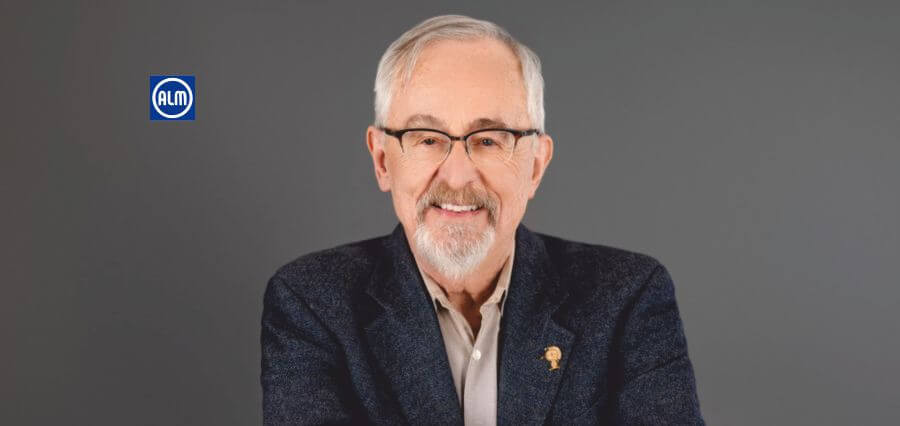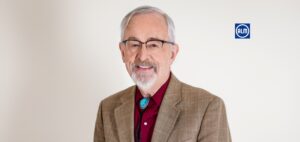Richard C. Larson’s journey is a living testament to the transformative power of education, intellectual exploration, and the relentless pursuit of knowledge. A pioneering figure in operations research, queueing theory, and decision science, Larson’s career has influenced the academic landscape and reshaped the ways we understand systems, structure, and strategy. His contributions stretch far beyond the classroom—impacting public policy, emergency response systems, educational equity, and model-based decision-making for everyday life.
His life’s work, however, is not defined solely by his accolades and achievements. At its heart lies a deep belief that education is the great equalizer—an enduring tool that can uplift individuals and communities. The story of Richard Larson is as much about innovation as it is about humility, resilience, and an unwavering commitment to making knowledge more accessible and meaningful to all. From his early academic milestones at MIT to his current mission of popularizing MODEL-Based Thinking, Larson has exemplified what it means to be a lifelong learner and an engaged global citizen.
This exploration of Larson’s journey, told in the third person and through his own words and actions, delves into the many layers of his remarkable career. It is a narrative of breakthroughs and mentorship, of balancing personal and professional spheres, and of staying true to one’s intellectual passions in a rapidly evolving world. In examining his path, we not only learn about his life, but we are also invited to reflect on our own journeys as learners, educators, and seekers of knowledge.
Early Academic Years at MIT
Richard C. Larson’s story begins with a strong foundation—his acceptance into the Massachusetts Institute of Technology at just 18 years old. Fresh out of Needham High School, Larson initially considered commuting to save on costs. However, his decision to join the Phi Beta Epsilon (PBE) fraternity, one of the few located on MIT’s Memorial Drive campus, proved pivotal. It provided a close-knit community that deeply enriched his academic and personal development.
His undergraduate experience ignited a passion for analytical thinking and problem-solving. This fervor led him to pursue graduate studies in Operations Research, culminating in a PhD. As his dissertation neared completion, his faculty advisor, Professor Alvin W. Drake, presented him with an unexpected opportunity—an offer to stay on as an Assistant Professor. Though initially uncertain, Larson accepted, beginning what would become a long and impactful career at MIT.
Despite initial doubts, he thrived in this role. He gradually ascended the academic ranks, driven by his genuine love for learning and his deep respect for the institution that had nurtured his talents. Over time, MIT became not just a place of employment but a home—a dynamic environment that allowed his ideas to flourish and his career to evolve.
Teaching: More Than Delivering Lectures
For Larson, teaching has always been more than the transfer of knowledge. It has been about mentorship, inspiration, and the cultivation of future innovators. He found the most fulfillment in the deep academic relationships formed with students, especially through research advising and graduate supervision.
He saw students not just as learners but as collaborators and co-creators. Many of these relationships led to pioneering research published in top journals. The pride he felt watching his students surpass their own expectations, lead innovations, and transform industries was one of the most rewarding aspects of his career. Teaching, to him, was an act of empowerment—of lighting a spark that would burn long after students left the classroom.
In his own words, teaching was about “shaping minds, nurturing critical thinking, and fostering a sense of academic rigor and creativity.” That belief made him a beloved and respected figure among his students, many of whom have gone on to become leaders in their respective fields.
Continuing Impact Through MODEL-Based Thinking
Although Larson has stepped back from formal teaching, his intellectual pursuits remain vibrant. One of his most ambitious recent endeavors is his book, MODEL THINKING For Everyday Life. In this work, he seeks to bridge the gap between academic models and real-world applications, equipping people with tools to make better decisions through structured thinking.
This philosophy—that understanding models leads to better outcomes—is at the core of his current mission. Whether through public talks, media appearances, or writing, Larson continues to disseminate these insights to wider audiences, including those with no formal academic training. His goal is not simply to educate but to empower—democratizing access to critical thinking tools in a world increasingly defined by complexity and rapid change.
Learning Is a Lifelong Habit
For Richard Larson, learning is not limited by age, context, or location. He has long championed the belief that continuous education is essential to a fulfilled life. Quoting Einstein, he reminds others: “A day without learning is a day wasted.” From observing the behavior of pets to uncovering complex research solutions in dreams, he sees opportunities for insight everywhere.
One particularly vivid example of this mindset occurred when he solved a major research problem—his famed Hypercube Queueing Model—during sleep. These subconscious “aha” moments exemplify his belief that learning doesn’t stop when the formal workday ends. They also underscore his view that the mind, if nourished with curiosity, can work in extraordinary ways.
Even decades into his career, Larson’s hunger for learning remains as strong as ever. He continues to read, explore, and question—living proof that intellectual engagement does not fade with time but deepens with it.
Contributions to Education and Equity
Richard Larson’s influence has always extended beyond academic theory. He is a firm believer that education should be a right, not a privilege. To that end, he has supported institutions like Notre Dame Cristo Rey High School, where he worked to expand access to quality education for underserved communities.
At MIT, one of his lasting contributions is the creation of the endowed Larson Chair in Data, Systems, and Society. This faculty chair ensures that future scholars will continue to explore and advance critical research in these domains. His philanthropy reflects not only a dedication to academic excellence but also a desire to level the playing field, enabling students of all backgrounds to thrive.
His work with MIT BLOSSOMS, an online learning initiative co-led with his wife Liz, further exemplifies this vision. By bringing free, high-quality STEM education to students worldwide, they helped thousands access opportunities that might have otherwise been out of reach.
Embracing and Overcoming Challenges
No impactful journey is free from setbacks, and Larson has never shied away from sharing his own. One particularly humbling moment occurred when, as a graduate Teaching Assistant, he was unable to explain a formula on the blackboard to a student. That experience was a turning point, pushing him to prepare more thoroughly and engage more deeply with his subject matter.
Rather than viewing the incident as a failure, he saw it as a critical learning moment—one that made him a more disciplined and effective teacher. It instilled in him the importance of humility, preparedness, and the understanding that excellence often emerges from mistakes.
His career, though filled with honors and accolades, is just as defined by these moments of growth and self-reflection. They show that true mastery comes not just from knowledge but from the willingness to evolve.
Balancing Work and Personal Life
Throughout his career, Larson maintained a delicate yet fulfilling balance between professional excellence and personal devotion. He often credited much of his success to the unwavering support of his wife, Mary Elizabeth Murray, affectionately known as Liz. Together for over four decades, their partnership was both personal and intellectual.
Liz was not just a supporter but a collaborator—managing MIT BLOSSOMS and contributing actively to many of Larson’s initiatives. Her passion for education, combined with her confidence and eloquence, made her a compelling advocate for their shared mission. Her death nearly two years ago left an immense void, but her legacy continues through the initiatives they built together.
Their three children and four grandchildren now carry forward their spirit of curiosity, resilience, and service—a testament to the life they shared and the values they passed on.
Navigating the Future of Education
Even in retirement, Larson keeps a keen eye on evolving educational trends, particularly the growing role of Artificial Intelligence. While he acknowledges AI’s immense potential, he also voices concerns about its misuse—especially the risk of students relying too heavily on AI-generated content.
He advocates for a balanced approach, where technology is used to complement, not replace, critical thinking and intellectual engagement. In his view, the core values of education—curiosity, discipline, and integrity—must remain non-negotiable. He remains hopeful that institutions will rise to the challenge and adapt thoughtfully.
Larson believes that while tools and platforms may change, the human drive to learn and explore will remain the cornerstone of education. It is this belief that fuels his continued engagement with public discourse on learning and innovation.
Wisdom for the Next Generation
To aspiring educators and researchers, Larson offers clear advice: follow your intellectual curiosity. He emphasizes that breakthroughs often come from questioning norms, venturing into new areas, and staying open to unexpected insights.
His own seminal contributions—the Hypercube Queueing Model and the Queue Inference Engine—were not part of a pre-planned roadmap but the result of deep engagement with practical problems. These innovations changed the landscape of emergency services and decision analytics, proving that curiosity and rigor can lead to real-world transformation.
He encourages young minds to look beyond textbooks, seek diverse perspectives, and embrace the journey of learning with enthusiasm. In doing so, they not only contribute to knowledge but also help shape a more thoughtful, informed society.
A Legacy That Lives On
Richard C. Larson’s life is a compelling narrative of purpose, persistence, and progress. Though he has transitioned out of formal academic roles, his impact continues to grow through his writing, public speaking, and mentoring. He is driven by the same question that has guided him since his earliest days at MIT: How can knowledge be used to make life better—for individuals, for communities, and for society as a whole?
Whether it’s on a Times Square billboard, in a quiet moment with a grandchild, or in the pages of his latest book, Larson’s message remains clear: learning is a lifelong endeavor, and the world is richer for those who embrace it.
As long as there are minds eager to learn, Richard Larson’s work—and the spirit behind it—will never truly be complete.



